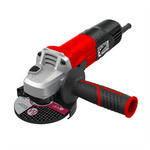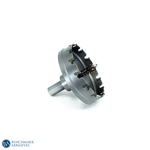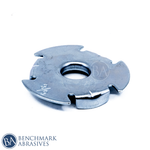
Nylon Brushes Guide: Types, Features, Applications

Nylon brushes are a must-have tool across various industries and for everyday use, thanks to their excellent combination of strength, flexibility, and durability. Made from nylon polymer filaments, these brushes stand out for their superb strength, abrasion resistance, and unique chemical properties. Unlike many other materials, nylon filaments can resist a wide range of chemicals and endure high temperatures (up to 350°F or 176°C), making them incredibly versatile and durable.
The term "nylon" itself is a collective noun for synthetic polymers, specifically polyamides, an organic thermoplastic. Since its revolutionary introduction by the DuPont company in 1938, nylon's rapid rise as a flexible synthetic fabric has solidified its place in diverse applications, extending far beyond textiles into the world of brushes.
Why Choose Nylon Brushes - Key Advantages
Nylon's unique properties offer distinct advantages over natural fibers, metal wires, and other synthetic materials, making it the preferred choice for a vast array of brushing applications.
-
Exceptional Durability and Longevity: Nylon filaments deliver superior durability, resisting wear and tear for a longer-lasting brush. This means fewer replacements and lower costs for you.
-
Excellent Bend Recovery (Memory): Nylon has a strong "bend memory," meaning its filaments return to their original shape even after repeated flexing and deformation. This ensures consistent brushing action throughout the brush's life, especially crucial for scrubbing and cleaning tasks.
-
Chemical and Moisture Resistance: Unlike many natural fibers, nylon is highly resistant to a broad spectrum of chemicals, including many cleaning solvents, weak acids, and alkalines. Its low water absorption rate means it maintains its stiffness and effectiveness even when wet, making it ideal for washing and wet-processing applications.
-
Non-Marring and Non-Sparking: Nylon is inherently non-abrasive to softer surfaces, making it excellent for cleaning or deburring delicate materials without scratching or marring them. Additionally, unlike metal wire brushes, nylon does not create sparks, a critical safety feature in environments with flammable materials.
-
Versatility in Abrasive Loading: Nylon filaments can be embedded with abrasive grits (like silicon carbide or aluminum oxide), transforming them into aggressive yet flexible tools for deburring, finishing, and polishing without the harshness of traditional wire brushes.
-
Temperature Tolerance: While not suitable for extreme heat, nylon's ability to handle temperatures up to 350°F (176 °C) broadens its application scope where some heat is present.
Types Of Nylon Brushes
-
Floor Scrubbers: These brushes have hard bristles that are flexible, thus being used for cleaning concrete floors, parking lots, and other heavy-duty surfaces. Their ability to recover after being deformed and resist wearing off means they last very long, even with constant use.
-
Cylinder Brushes: Flexible and strong cylinder brushes serve different washing functions. Their abrasiveness varies from coarse, such as 46 grit used for heavy-grind work, to fine and gentle, consisting of 600 grit for light polishing. Many possess either solid or hollow shafts to make re-bristling easier when the time arrives.
-
Wheel Brushes: These are meant for smoothing rough edges, surface blending, and finishing touches. However, unlike traditional wire brushes, nylon wheel brushes do not pose a safety hazard, and they do not react with materials. They come in different sizes and with steel or copper back (with or without a shank handle).
-
Cup Brushes: Similar in purpose to wheel brushes, nylon cup brushes are typically smaller (1, 2, or 3-inch diameters). Their density and rigidity dictate their use, ranging from high-speed angle grinder applications to light deposit removal.
-
Twisted Wire Brushes: These brushes are designed for precise cleaning tasks. Single-stem tube brushes are available with long handles ranging from 6 to 16 inches for light hand cleaning. For more aggressive cleaning or the removal of burrs in tight spaces, stronger double-stem brushes are suitable for use with power tools.
-
Strip Brushes: Strip Brushes are simply designed with nylon filaments secured in a metal channel. They're built to last, offering excellent resistance to abrasion, low water absorption, and superior bend recovery. Plus, they stand up well against cleaning solvents and weak acids. You'll find them perfect for tasks like sweeping debris, applying coatings, reducing static, and cleaning conveyors.
-
Hand Brushes: A timeless tool, modern nylon hand brushes come in countless shapes and sizes, including scratch, channel, welder, toothbrush-style, platers, acid swabs, and parts cleaners, optimized for every specific cleaning or application scenario.
Components Of Nylon Brushes
The fundamental design of a nylon wire brush comprises a handle and nylon filaments. These two parts are combined during manufacturing to create a functional tool. The distinctions among different types of nylon brushes largely stem from variations in handle designs and the way the nylon filaments are cut and produced.
A. Filaments
The choice of filaments is the initial and most critical step in designing a nylon brush, determining its type and intended use. The Nylon 6, 11, 12, 610, 66, and 612 are some common types. These can also be imbued with abrasive materials such as silicon carbide, aluminum oxide, and aluminum silicate, each offering varying levels of abrasiveness and grit. The "filling" – the specific type and arrangement of filaments – is the most crucial aspect of the brush's design, dictating its possible applications.
Types Of Nylon Brush Filaments
The type, size, and thickness of the filament play a significant role in how nylon brushes perform. You’ll often see names like Nylon 6 or Nylon 66 — these numbers refer to the chemical makeup, which affects things like how tough the brush is, how well it resists wear, and how much water it soaks up.
Nylon 6 works well for everyday household use because it strikes a good balance between being firm and flexible. Nylon 6.6, on the other hand, is better for heavy-duty industrial use since it can handle more heat and wear. Nylon 610 doesn’t absorb much water, so it stays strong even in rough conditions. Nylon 612 is both water- and chemical-resistant, and it’s safe for food use.
Nylon 11 is produced from renewable resources. It absorbs very little water and is tough against impact. Nylon 12, derived from petroleum, excels in demanding environments; it resists wear, UV rays, and reduces noise effectively.
B. Handles
The type of handle a given brush has can significantly influence its ease of use; some brushes have simple wooden handles, while others, especially with power tools, utilize a metal cup handle. Industrial brushes generally have metal handles, are constructed for heavier-duty work. Plastic, metal, wire, or wood are used for the handles of cleaning and cosmetic brushes, depending on what feels good to hold or what the brush is really meant for.
Types Of Handles in Assembling Nylon Brushes
The method for attaching brush filaments to handles varies depending on the brush's size, filament spacing, and handle material. The goal is to prevent filament shedding.
For wooden handles, small bundles of filaments are inserted into precisely drilled holes using computerized machines. For plastic handles, filaments can be attached similarly to wood, or they may be inserted while the plastic is still soft, allowing for a more secure fit once it hardens.
Metal handles differ in their attachment methods: filaments are pressure-fitted for channel and tube types, while wire-stem brushes involve placing filaments between twisted, doubled-over wire. Finally, many industrial brushes do not have handles and are designed to connect directly to power tools. They come in various shapes, like cylinders, ovals, wheels, or cup brushes, and are used for manufacturing, cleaning, or finishing tasks.
General Applications Of Nylon Brushes
Nylon brushes can be used in such a vast array of job operations, from personal care products to a heavy industry site. Their utility stems from diverse grades, grit sizes, and mechanical properties, enabling them for tasks such as abrasion, washing, general cleaning, and the application of various substances. They are also effective for polishing, eliminating static, cleaning pipes, maintaining conveyors, and even distressing wood.
Industrial Applications For Nylon Brushes
Nylon brushes are essential across various industrial applications. They're used in aerospace for precision tasks like deburring and smoothing engine components, in agriculture for efficient seed and soil handling, and for maintaining firearms by gently cleaning carbon buildup. In glass manufacturing, they round edges and polish surfaces, while the military uses them for similar deburring and smoothing on heavy equipment. Also, they're crucial in printing for cleaning plates to ensure high-quality results.
Conclusion
Nylon wire brushes are more than just cleaning tools; they are advanced instruments made from versatile synthetic polymers that offer unmatched flexibility, chemical resistance, and bend recovery. From floor cleaning and tough deburring to specific industrial applications in aerospace and manufacturing, their variety of types, filament compositions, and handle designs provides customized solutions for nearly every brushing need. Understanding the details of nylon properties allows users to select the right brush, ensuring efficient, effective, and safe operation for numerous jobs.



































































